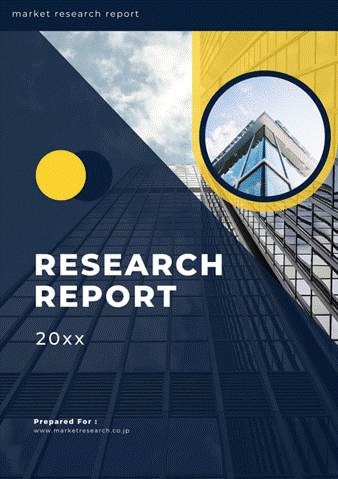 | • レポートコード:D0-MOR-AP1413 • 出版社/出版日:Mordor Intelligence / 2020年4月 • レポート形態:英文、PDF、100ページ • 納品方法:Eメール(受注後2-3営業日) • 産業分類:農業 |
| Single User | ¥555,000 (USD3,750) | ▷ お問い合わせ |
| Team User | ¥629,000 (USD4,250) | ▷ お問い合わせ |
| Corporate License | ¥1,036,000 (USD7,000) | ▷ お問い合わせ |
• お支払方法:銀行振込(納品後、ご請求書送付)
レポート概要
| 本調査レポートは、ライムのヨーロッパ市場について調査・分析した資料で、ライムの市場概要、動向、セグメント別市場規模、競争状況、企業情報、市場機会分析などで構成されています。 |
The Europe Lime Market Lime is expected to register a CAGR of 4.1% during the forecast period(2020-2025). European Union lime production is mainly concentrated in the Mediterranean region. Spain and Italy which represents 80% of the overall production of lime in the European Union. The remaining 20% is distributed among the other Member States, such as Greece and Portugal. Italy is the second-largest European lime producer after Spain. Sicily in Italy is the main lime producing area, accounting for 88% of Italy’s production. Over the years, the lime has become an important part of many culinary dishes, and for decoration of dishes also. The production of exotic limes such as finger limes has shown an uplift in the recent years because the exotic limes are premium priced and demanded too. The domestic consumption of lime in the European Union is increasing every year with a positive trend, which makes the country produce more to cater to domestic demand.
Key Market Trends
Rising Domestic Consumption Drives the Market
Domestic demand for limes and lemons are ever-increasing in the region. Lemons and limes are grown primarily for the fresh market, with the juice from lemons and limes used mostly as a flavouring in beverages. The most widely produced lime variety for fresh consumption is the Persian Lime. Its popularity is due to its seedless nature. The study says as economies start to westernize, more hotels are built which in turn means more lemons being used in water and cocktails. According to a recent report of FAO, Europe leads fresh domestic consumption of limes and lemons with 1,766 thousand metric ton consumption in 2019/20. Between 2013 and 2016, in Western Europe, consumption increased by 300 grams per inhabitant and per year, reaching an average of 1.8 kg per inhabitant per year and even more in Eastern Europe where it increased by 400 grams, reaching an average of 2.3 kg per inhabitant and per year. This rising local demand is likely to drive the market during the forecast period.
Spain Dominates Production in Europe
The strong demand from consumers for Spanish lime is accelerating the production of these limes in the European market, which is not only encouraging Spain but also the neighboring countries to cater to the Spain market. According to FAO, Spain produced 1087.2 thousand metric ton of lemon in 2018. The area harvested under limes and lemons in Spain increased from 38,484 hectare in 2015 to 46,010 hectares in 2018. Spain is also the leading exporter of lime in the world. The country exported 815.2 thousand metric tons of lime and lemons across the globe in 2018 (ITC Trade Map). Spain usually exports lime to other European countries such as Germany, France, United Kingdom, Poland and Italy. Major non-European importers of Spanish lime are Canada and the United States. The production trend in the country is likely to grow steadily during the forecast period, given high local and export demands in the European Union region.
Reasons to Purchase this report:
– The market estimate (ME) sheet in Excel format
– 3 months of analyst support
1 INTRODUCTION
1.1 Study Deliverables
1.2 Study Assumptions
1.3 Scope of the Study
2 RESEARCH METHODOLOGY
3 EXECUTIVE SUMMARY
4 MARKET DYNAMICS
4.1 Market Overview
4.2 Introduction to Market Drivers and Restraints
4.3 Market Drivers
4.4 Market Restraints
4.5 Value Chain Analysis
4.6 PESTLE Analysis
5 MARKET SEGMENTATION
5.1 Geography
5.1.1 Spain
5.1.1.1 Production Analysis
5.1.1.2 Consumption Analysis and Market Value
5.1.1.3 Import Market Analysis (Volume and Value)
5.1.1.4 Export Market Analysis (Volume and Value)
5.1.1.5 Price Trend Analysis
5.1.2 France
5.1.2.1 Production Analysis
5.1.2.2 Consumption Analysis and Market Value
5.1.2.3 Import Market Analysis (Volume and Value)
5.1.2.4 Export Market Analysis (Volume and Value)
5.1.2.5 Price Trend Analysis
5.1.3 United Kingdom
5.1.3.1 Production Analysis
5.1.3.2 Consumption Analysis and Market Value
5.1.3.3 Import Market Analysis (Volume and Value)
5.1.3.4 Export Market Analysis (Volume and Value)
5.1.3.5 Price Trend Analysis
5.1.4 Germany
5.1.4.1 Production Analysis
5.1.4.2 Consumption Analysis and Market Value
5.1.4.3 Import Market Analysis (Volume and Value)
5.1.4.4 Export Market Analysis (Volume and Value)
5.1.4.5 Price Trend Analysis
5.1.5 Russia
5.1.5.1 Production Analysis
5.1.5.2 Consumption Analysis and Market Value
5.1.5.3 Import Market Analysis (Volume and Value)
5.1.5.4 Export Market Analysis (Volume and Value)
5.1.5.5 Price Trend Analysis
6 MARKET OPPORTUNITIES AND FUTURE TRENDS